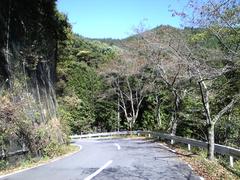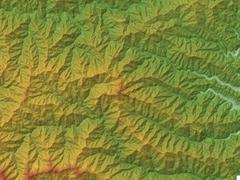
Wado Kuroya Station: Visiting Hours, Tickets, and Travel Guide to Chichibu’s Historical Heritage
Date: 04/07/2025
Introduction: The Gateway to Chichibu’s Past and Present
Wadō-Kuroya Station, set amid the verdant mountains of Chichibu, Saitama Prefecture, is more than a simple stop on the Chichibu Main Line. Since its opening in 1914 (originally as Kuroya Station), it has served as a vital access point for travelers seeking to explore the region’s rich tapestry of history, spirituality, and natural beauty. Most notably, the station stands at the crossroads of Japan’s early industrial development, being adjacent to the ancient Wadō copper mine—the origin of Japan’s first official coin, the Wadōkaichin, minted in the early 8th century (Chichibu Railway; Atlas Obscura).
This comprehensive guide provides essential information for planning your visit to Wadō-Kuroya Station, including up-to-date visiting hours, ticketing, transportation options, accessibility, and highlights of nearby historical and spiritual sites. Whether your interest lies in Japan’s industrial origins, cultural traditions, or the Chichibu 34 Kannon Pilgrimage, this station offers an ideal starting point for your journey (Funliday; Chichibu Area Tourism Organization).
Station History and Cultural Significance
Early Development and Name Change
Wadō-Kuroya Station was inaugurated as Kuroya Station on October 27, 1914, supporting the local mining industry by linking rural Saitama with the broader Kanto region. In 2008, the station was renamed to reflect its deep ties to the historic Wadō copper mine and the Wadōkaichin coin, underscoring the area’s role in Japan’s transition from barter to a monetary economy (Funliday).
The Wadō Copper Mine and Birth of Japanese Coinage
Just a short walk from the station, the Wadō copper mine marks the site where copper was first discovered in Japan, leading to the minting of the Wadōkaichin coin during the Wadō era (708–715 CE). This pivotal event linked Japan to the monetary systems of neighboring countries and played a key role in the nation’s economic and technological development. Today, the mine’s ruins and a monument shaped like a Wadōkaichin coin stand as reminders of this legacy (Atlas Obscura).
Spiritual and Folkloric Highlights
Hijiri Shrine: The “Money God” Shrine
A five-minute walk from the station lies Hijiri Shrine (Zenigami-sama), where local tradition encourages visitors to wash coins in a sacred stream to bring good fortune. This unique ritual, rooted in the area’s mining heritage, draws both pilgrims and tourists. The shrine’s links to the Wadōkaichin coin and its role in regional folklore make it a popular destination for those seeking prosperity and cultural immersion (Atlas Obscura).
Chichibu 34 Kannon Pilgrimage
Wadō-Kuroya Station is an access point for the Chichibu 34 Kannon Pilgrimage, a historic route featuring 34 Buddhist temples dedicated to Kannon, the deity of compassion. Several temples, such as Sekiryūzan Hashidate Temple, are within easy reach, offering spiritual reflection amidst Chichibu’s serene landscapes (Japan Whisper; Japan Rar).
Festivals and Sacred Landscapes
Chichibu’s lively spiritual culture is evident in festivals like the Chichibu Night Festival (Yomatsuri), recognized by UNESCO and celebrated every December. The region’s mountains, rivers, and forests—part of Chichibu-Tama-Kai National Park—are considered sacred and provide scenic settings for both pilgrimage and relaxation (Japan Whisper).
Station Layout and Facilities
Wadō-Kuroya Station retains its early 20th-century charm with a single island platform and a modest station building. The station is staffed and generally accessible, featuring ramps to the platform, restrooms, and basic amenities. However, coin lockers and extensive shopping facilities are not available (en-academic.com).
Visitor Information: Hours, Tickets, and Accessibility
Visiting Hours
- Station: Open during train service hours, typically from 6:00 AM to 10:30 PM.
- Nearby Sites: Hijiri Shrine and pilgrimage temples are generally open from sunrise to sunset; the Wado Mine Monument is open daily from 9:00 AM to 5:00 PM (closed December 29–January 3).
Tickets and Pricing
- Train Tickets: Purchase at station counters or vending machines. IC cards (Suica/PASMO) may not be accepted on the Chichibu Railway; check in advance.
- Wado Mine Monument: ¥300 for adults; free for children under 12; group discounts available.
- Special Passes: Chichibu 2-Day Pass offers unlimited railway rides and discounts at participating sites.
Accessibility
- Station: Basic accessibility features, including ramps and ground-level platforms. Some historical sites may have uneven terrain.
- Assistance: Available at the station; contact staff if you require additional support.
Travel Tips
- Wear comfortable shoes for walking.
- Bring cash for tickets and small purchases.
- Visit in spring or autumn for optimal weather and seasonal events.
- Download offline maps or travel apps for navigation and real-time updates.
Getting There: Routes and Transportation
From Tokyo
- Seibu Ikebukuro Line: Take the Limited Express “Laview” from Seibu-Ikebukuro Station to Seibu-Chichibu Station (approx. 80–100 min), walk to Ohanabatake Station, then transfer to Chichibu Railway to Wadō-Kuroya Station (about 10 min).
- JR Takasaki Line: From Tokyo or Ueno Station to Kumagaya Station, transfer to Chichibu Railway, and continue to Wadō-Kuroya Station (approx. 2.5 hours total).
- Tobu Tojo Line: From Ikebukuro Station to Yorii, then transfer to Chichibu Railway.
By Car
- Use the Kan-etsu Expressway to Hanazono IC, then Route 140 toward Chichibu. Limited parking is available near the station.
From Airports
- Haneda/Narita: Take airport trains to central Tokyo, then follow above train routes.
Local Transport
- Walking and cycling are recommended for exploring nearby attractions. Buses and taxis are available but limited at Wadō-Kuroya Station.
Nearby Attractions
- Wado Mine Monument: Explore ancient mining history and coinage legacy.
- Hijiri Shrine: Experience local rituals for prosperity.
- Nagatoro Valley: Enjoy boat rides and scenic hikes.
- Chichibu Shrine and City Center: Discover museums, local crafts, and seasonal festivals.
Frequently Asked Questions (FAQ)
Q: What are the station’s visiting hours?
A: Open from around 6:00 AM to 10:30 PM, in line with train schedules.
Q: Are IC cards accepted?
A: Suica and PASMO are typically not accepted on Chichibu Railway; use paper tickets.
Q: Are guided tours available?
A: Yes, especially during spring and autumn; check Chichibu Area Tourism Organization for schedules.
Q: Is the station accessible for travelers with disabilities?
A: The station is accessible with ramps and staffed assistance, though some local sites may have limited accessibility.
Q: Are there lockers or luggage storage?
A: Not at Wadō-Kuroya; use major stations like Chichibu or Seibu-Chichibu for storage.
Visual Aids and Planning Resources
- Photos: Seek images of Wadō-Kuroya Station, the Wado Mine Monument, pilgrimage temples, and festival scenes.
- Maps: Use travel apps or the Chichibu Railway official website for navigation.
Practical Summary and Final Tips
Wadō-Kuroya Station offers a harmonious blend of Japanese industrial history, spiritual tradition, and natural splendor. From the legacy of the Wadōkaichin coin to vibrant festivals and tranquil shrines, every visitor can find a meaningful experience. Plan ahead for tickets, check accessibility if needed, and don’t miss seasonal events that bring the region’s history to life.
For real-time travel updates, plan your itinerary with the Audiala app, and consult official resources for the latest information.
Sources
Plan your Chichibu adventure today—download the Audiala app for the latest updates, exclusive content, and personalized travel tips. Follow us on social media and explore more guides to uncover the hidden treasures of Saitama and beyond!



